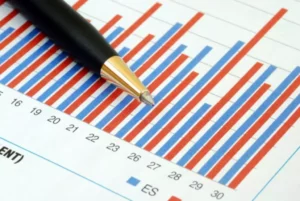Content

Company A is a manufacturing company that provides goods to company B. These two companies have a track record and have been doing business for some time now. It may be due to a decrease in raw material cost, a decrease in overheads, and so on.

To record the bank credit memo the company will debit Cash and credit another account. Businesses are not the only ones that create debit memos; banks credit memo also issue them. A bank sends a debit memo when it charges an account holder a fee on its bank statement, reducing the account balance in return.
Terms Similar to Credit Memo
For example, a computer maker might give its partner companies discounts on their products if they buy a lot of them. The partner companies would keep track of this discount with a credit memo from the supplier. This article will explain what credit memos are and how they fit into accounting. It will cover topics such as the types of credit memo transactions, how they affect the financial statements, and strategies for adequately tracking them in the general ledger. Depending on the amount and how much goods or services the buyer plans to purchase, credit memos can reduce or eliminate the amount of their next purchase. Invoices, which are also used to record sales transactions, are not the same as cash memos.
The seller, then, must also record the memo as a reduction, but it is a reduction of its accounts receivable . A credit memo is a shortened term of a credit memorandum, which is a document issued by the seller of goods and services to the buyers. It reduces payments that the buyer owes or the customer owes to the seller after the invoice is sent. Correctly accounting for credit memos can also present the total receivables balance more accurately.
Cash and Credit Memo
The credit memo cancels out previous bills and lowers the amount of money the customer owes the supplier for goods or services. It is when the seller of goods issues a statement credit to their customer’s account instead of a direct refund or another payment method. Most of the time, a statement credit happens when the amount returned is too small to be paid in any other way. Again, this ensures that both parties keep accurate records of transactions between them. One type of credit memo is issued by a seller in order to reduce the amount that a customer owes from a previously issued sales invoice. Another type of credit memo, or credit memorandum, is issued by a bank when it increases a depositor’s checking account for a certain transaction.

In some situations, businesses like banks and insurance companies need to send credit memos to their customers to prove refunds or other changes to their finances. For example, if a bank finds an error on a customer’s statement and gives them a refund, they will likely include a credit memo detailing the transaction. It helps ensure that all parties are aware of any changes in the balance owed. A common misconception about credit memos is that they automatically issue refunds. A credit memo doesn’t guarantee a refund; it just says that an item or service was returned to the seller or provider and reduces any remaining balance. Banks can also issue credit memos to amend different transactions.
